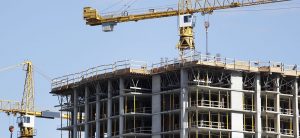- OUR APPROACH
-
COMMITTED TO YOUR SUCCESS
Our approach, developed over decades of experience, is fine-tuned to get the results you want.
We deliver concept-to-completion solutions, designed by temporary power specialists with access to the largest inventory of high-quality power generation and distribution equipment in North America.
-
- Equipment
-
RENTALS
From a wide range of diesel and natural gas generators to transformers, cable, light towers and more, our large rental fleet and extensive vendor network ensure we’ll have the temporary power equipment that your project requires — every time.

-
- Industries
-
INDUSTRIES WE SERVE
For nearly 20 years, we have been at work powering projects across Canada’s industrial sectors.
Select from this sampling of industries to learn how we can put our expertise to work for you.
VIEW ALL- Projects
- About
-
A PROUD HISTORY. A BRIGHT FUTURE.
From our inception in 1998, we have been building our team on a foundation of excellence. Our team members’ passion, expertise and commitment are what have allowed us to grow into a national company with projects across Canada.
Click on the links to learn more about our history, our team or our career opportunities.
- Blog
- Contact
-
At the beginning of 2019, a mass of extremely cold air escaped the Arctic Circle and traveled south, plunging vast swaths of central and eastern North America into some of the lowest temperatures in living memory. Calgary experienced its third-coldest February on record (with 1936 and 1887 taking the top two spots) and in January, Chicago reached a shocking low of -45 Fahrenheit – colder that day than the Antarctic.
While polar vortexes are nothing new, experts believe that climate change might be causing them to become less predictable and more extreme – all the more reason to ensure your business or project site is prepared to handle the next one.
To learn how to make sure your business is ready for the next polar vortex, and how Trinity Power’s temporary power and contingency planning services can help, we spoke with Nathan Normoyle, VP of National Operations at Access Restoration Services, and Trinity’s own Nick Foster.
It Can Happen to You
Compared to hurricanes or wildfires, cold temperatures might not seem like a destructive natural force, but Normoyle has seen firsthand the damage this recent polar vortex has caused.
“We responded to a client in January who owned a high rise multi-residential building with approximately 1,200 tenants,” he recalls. “And they experienced a ruptured sprinkler line that was part of their fire suppression system.”
The sprinkler line had frozen because a heater in the garbage room had failed. With temperatures outside hovering around -30 Celsius that day, the consequences were swift: “It took only 20 minutes from the heater failing for this main fire suppression sprinkler line to burst from the cold,” says Normoyle.
The result was approximately $2 million in damages, and the temporary displacement of 1,200 residents.
While this might seem like an unlucky break, Normoyle suggests otherwise: “This is something that’s a lot more common than people think.”
Extreme Cold Weather Can Damage Your Business
“Extreme cold weather causes a number of different problems and hazards,” says Normoyle, the most common of which is frozen pipes and sprinkler lines.
“A frozen sprinkler line in a building, whether it be a commercial or a multi-residential building, can cause extraordinary damage to the inside of the building,” he explains. But that’s not the only concern. “If it’s a sprinkler line, the building loses fire suppression — its primary life safety system — for whatever amount of time it takes to repair it.”
Another hazard of extreme cold weather is equipment failure. “Any motorized equipment, whether that be electric or gas powered, is susceptible to failure when temperatures drop to extreme lows,” explains Normoyle. “Components freeze; if there’s any condensation in fuel lines it’ll freeze and prevent the machine from operating properly.” This can affect everything from construction equipment at a job site to building systems like HVAC systems, and power equipment.
And when power equipment fails, it can start a chain reaction.
Foster explains: “When it gets that cold, things start to fail. Transformers start to fail, wires start to crack and break, and insulation as well. It just causes a lot more emergency outages.”
Emergency outages aren’t the only secondary effects of extreme cold weather. During cold snaps, ironically, the risk of fire increases drastically.
“Whether it’s office buildings or multi-residential buildings or even residential single family homes, when it gets really cold, and especially if the building is a little bit older with not great insulation, people tend to use alternative means of heating,” Normoyle says. “Space heaters are one example. And when these are not correctly plugged into the right electrical outlet, or if they’re plugged into an undersized power bar or extension cord, this drastically increases the frequency of fires.”
Prepare Your Business For The Next Polar Vortex
Ensure Your Equipment is Well-Maintained
According to Normoyle, a top priority for businesses preparing for the next polar vortex should be to make sure that their equipment is being properly maintained and serviced.
“Ensuring that a regular annual inspection and maintenance is done of the building HVAC or heating system will avoid any unnecessary down time and ensure that it’s going to function as it should when you need it,” says Normoyle. “Make sure that any equipment being operated is regularly serviced and that minimum and maximum operating temperatures are considered.”
Check that Pipes and Sprinkler Lines are Properly Insulated
Normoyle also recommends checking that commercial and residential buildings’ pipes are properly insulated, or well-heated if insulation isn’t possible. “If there are any sprinkler lines that run close to an area that’s exposed to the outside temperatures, it certainly should be looked at as a concern and properly insulated, or the area properly heated if need be,” he explains.
Don’t Overload Your Power Supply
Along with equipment maintenance and proper insulation, it’s important to consider whether your is able to handle the increased load of the extra heating that comes with cold weather.
“As the polar vortex rolls in, people add more and more heat to their facility, which then requires more power,” explains Foster. “There’s definitely an issue there – you can’t just be adding more and more heat to a service in a building. You’ll probably need to bring in temporary power to feed that temporary heat.”
Have a Contingency Plan in Place
The best way to prepare for a polar vortex, or any unexpected emergency, is to create a contingency plan.
“Knowing who to call when you do have an emergency — someone who’s going to respond and give you that full turnkey package — is the best way to prepare because you never know when it’s going to happen,” says Foster. “Have an idea of what you need, know the steps it takes and have an idea of cost so that you have the ability to pull that trigger really quickly. It’s the difference between you having power back on in five hours or two days.”
Call Trinity For Comprehensive Contingency Planning and Emergency Response
Trinity’s extensive inventory and 24/7 emergency response make us an excellent resource in an emergency. But if you want to be prepared before another polar vortex — or any other disaster — hits, we also provide comprehensive contingency planning services that account for a wide range of power outage scenarios.
“If a facility failure occurs, we can mobilize quickly when we’ve been involved in creating a contingency plan,” says Foster. “Because we’ve already studied the electrical infrastructure and created single line diagrams that detail the exact temporary power equipment needed to restore operations, we can execute a solution much faster.”
Related Articles
Subscribe for access to exclusive content
"*" indicates required fields




















